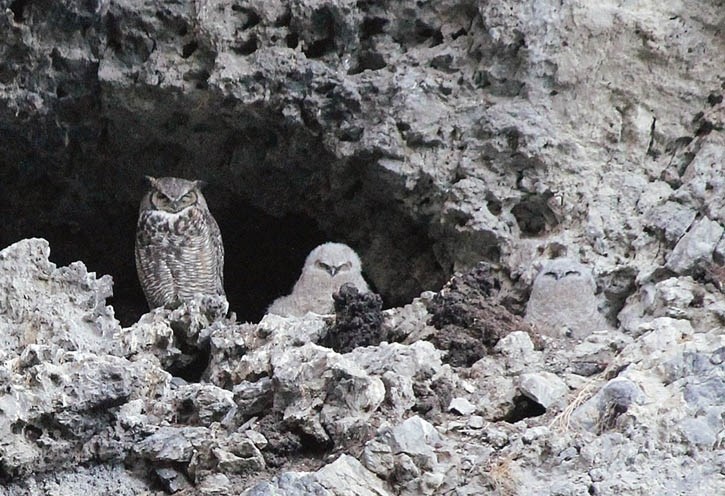Protection of nesting owls has led to the closure of some climbing routes in the Grassi Lakes area in Canmore.
Protection of nesting owls has led to the closure of some climbing routes in the Grassi Lakes area in Canmore.
The closure, which has gone into effect about this time for the past several years, is to give great horned owls nesting in the rock face above the picturesque lakes some space and security during this sensitive time.
“The closure will go until the eggs are hatched and the chicks have fledged,” said Jill Sawyer, a communications officer for Alberta Parks and Environment, noting the closure has typically been lifted in previous years around the end of June, early July.
“It's in place to give the owls some more space and a little but more quiet as we know that is a very busy climbing area there, and we want to give a little bit more of a perimeter around the nesting area so people aren't right on top of them.”
The temporary closure applies to the left side of Graceland rock climbing area at Grassi Lakes, including the climbing routes You Ain't Nothing But a Hang Dog, Memphis and It's Now or Never.
“The conservation officers will keep an eye on it and lift that closure once the chicks are out of the nest,” said Sawyer.
The great horned owl is Alberta's provincial bird and commonly found throughout Alberta.
Their nesting sites can vary widely, and include stick nests of other birds, snags, large tree cavities, cliff ledges, rock outcrops and caves.
The great horned owl is a generalist and opportunistic hunter, with its diet varying by region and prey availability. In general, most of its diet is made up of mammals, with a small portion including birds and even smaller prey such as amphibians, reptiles and invertebrates.
Pairs mate for life and share the duties of raising owlets. In Alberta, two to three eggs are laid in late February and early March, and if the first clutch is lost, the female may lay a second clutch, usually with fewer and smaller eggs.
Sawyer said the closure at Grassi Lakes has been an annual event for several years now, noting it helps people embrace the idea of enjoying seeing wildlife without getting too close.
“It's exciting for people to be able see wildlife like this from a distance,” she said. “If they're hiking on that trail they can often see them outside the nest.”
